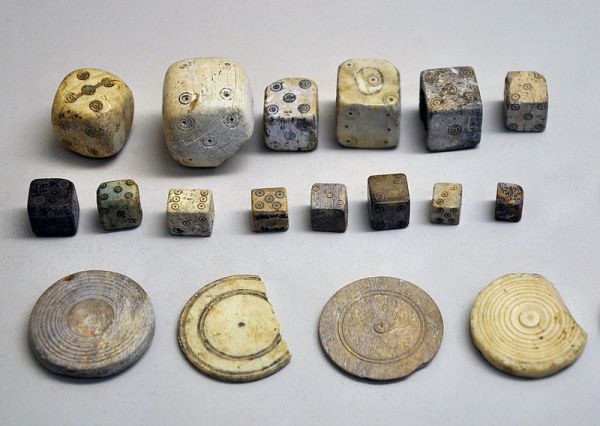Breve storia dei dadi

Una breve storia della nascita, della diffusione e dell'uso dei dadi nel mondo raccontata su Neatorama. Dagli sciamani a Dungeons and Dragons.
Archaeologists can't pinpoint the first human who threw dice, but they do know this: Unlike many customs that started in one place and then spread, dice-throwing appeared independently all across the populated world. The oldest known dice -dating back at least 8,000 years- consisted of found objects such as fruit pits, pebbles, and seashells. But the direct precursors of today's dice were bone: the ankle bones of hoofed animals, such as sheep and oxen. These bones -later called astragali by the Greeks- were chosen because they are roughly cube-shaped, with two rounded sides that couldn't be landed on, and four flat ones that could. Which side would be facing up after a toss, or a series of tosses, was as much a gamble to our ancestors as it is to us today.
The first dice throwers weren't gamers, though -they were religious shamans who used astragali (as well as sticks, rocks, or even animal entrails) for divination, the practice of telling the future by interpreting signs from the gods. How did these early dice make their way from the shaman to the layman? According to David Schwartz in Roll the Bones: The History of Gambling:
The line between divination and gambling is blurred. One hunter, for example, might say to another, "If the bones land short side up, we will search for game to the south; if not, we look north," thus using the astragali to plumb the future. But after the hunt, the hunters might cast bones to determine who would go home with the most desirable cuts.

